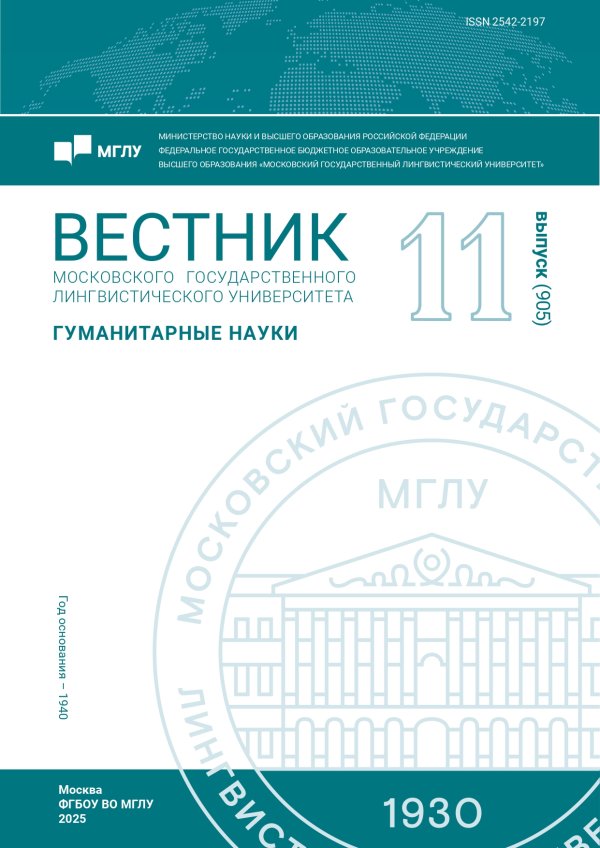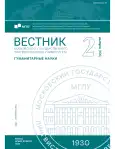Рецепция в диахронии: генезис английских юридических терминов в римском праве
- Авторы: Муравьев Ю.А.1
-
Учреждения:
- Российский университет дружбы народов им. Патриса Лумумбы
- Выпуск: № 2(896) (2025)
- Страницы: 37-43
- Раздел: Языкознание
- URL: https://journal-vniispk.ru/2542-2197/article/view/283958
- ID: 283958
Цитировать
Полный текст
Аннотация
В работе рассматривается этимология ряда терминов современного юридического английского языка, имеющих связь с институтами римского права и древнеримской религии. Цель исследования – установить особенности фонетической, словообразовательной, лексической, синтаксической и семантической деривации таких терминов, выявить их глубинную смысловую структуру в юридическом английском и прояснить доминанты их смысловых полей. Анализ происхождения терминов с помощью методов контрастивной лингвистики позволяет глубже понять значение отдельных институтов и правовых концептов, которые до сих пор используются в современных юрисдикциях общего права и романо-германской правовой семьи.
Ключевые слова
Об авторах
Юрий Александрович Муравьев
Российский университет дружбы народов им. Патриса Лумумбы
Автор, ответственный за переписку.
Email: muravyev_yua@pfur.ru
кандидат педагогических наук, доцент кафедры теории и практики иностранных языков Института иностранных языков
РоссияСписок литературы
- Покровский И. А. История римского права. СПб.: Летний сад, 1998.
- Шайд Дж. Религия римлян. М.: Новое издательство, 2006.
- Новицкий И. Б. Римское право: учебник. 3-е изд. М.: КНОРУС, 2014.
- Новицкий И. Б., Перетерский И. С. Римское частное право. М.: Зерцало-М, 2012.
- Кофанов Л. Л. Жреческие коллегии в Раннем Риме. М.: Наука, 2001.
- Дождев Д. В. Римское частное право. М.: ИНФРА М – НОРМА, 1996.
- Duckworth M. Law Words. Sydney: University of Sydney, 1995.
- Krois-Lindner, A. International Legal English. Cambridge: Cambridge University Press, 2006.
- Jacobson R. The framework of language. Michigan: Michigan Studies in the Humanities, 1980.
- Andersen P. A Theory of Computer Semiotics. Cambridge: Cambridge University Press, 1997.
- Дюмезиль Ж. Религия Древнего Рима. СПб.: Издательский проект «Квадривиум», 2018.
- Livy, Titus Livius. Ab urbe condita. Braunschweig: Vieweg+Teubner Verlag, 1989.
- Harrison W. The Description of England: The Classic Contemporary Account of Tudor Social Life. New York: Dover Publications Inc., 1994.
- Моммзен Т. История Рима. Т. 1. До битвы при Пидне. СПб.: ЮВЕНТА, 1997.
- Галикарнасский Дионисий. Римские древности: в 3 т. М.: Рубежи XXI, 2005. Т. I–III.
- Turner V., Bruner E. M. The Anthropology of Experience. Urbana and Chicago: University of Illinois Press, 1986.
- Элиаде М. Аспекты мифа. М.: Инвест-ППП, 1995.
- Геннеп А. Обряды перехода. М.: Восточная литература РАН, 1999.
- Plessis P. Janus in the Roman Law of Urban Lease // Historia: Zeitschrift für Alte Geschichte. 2006. № 55. P. 48–63.
- Гак В. Г. О контрастивной лингвистике // Вып. XXV. Контрастивная лингвистика / сост.: В. П. Нерознак, В. Г. Гак. М.: Прогресс, 1989. С. 5–17.
- Brinton L. The structure of modern English: a linguistic introduction. Amsterdam: John Benjamins Publishing Company, 2000.
Дополнительные файлы











